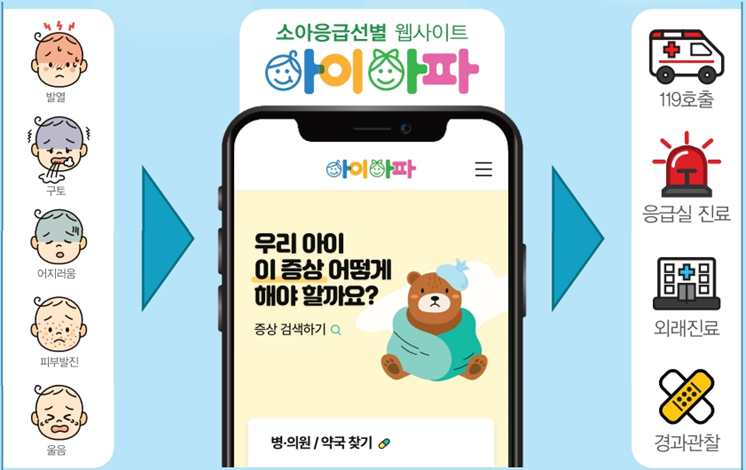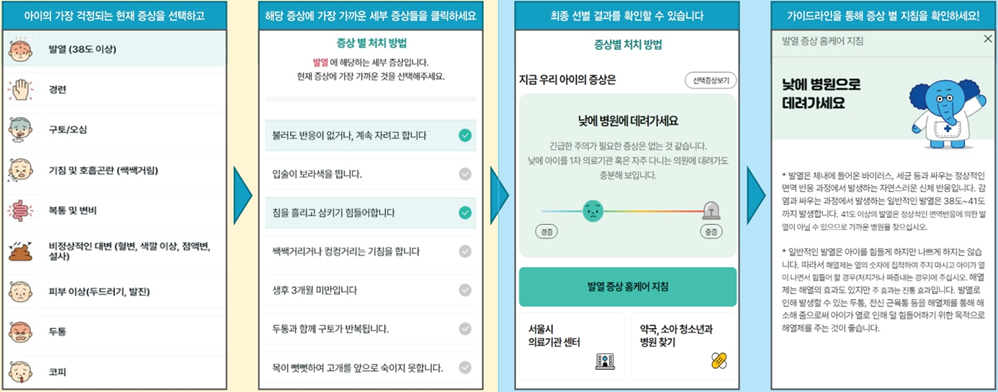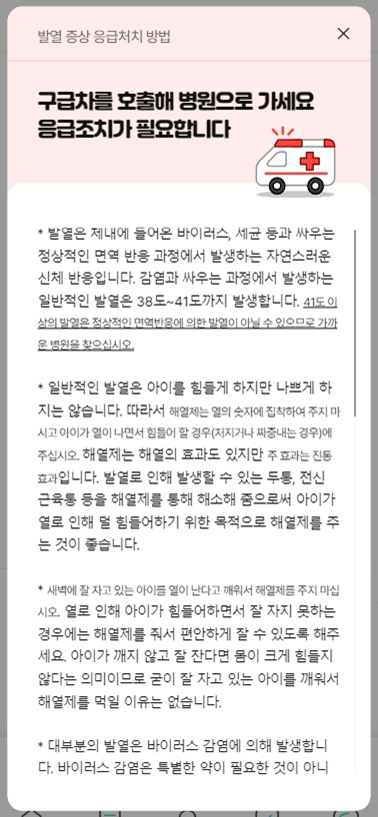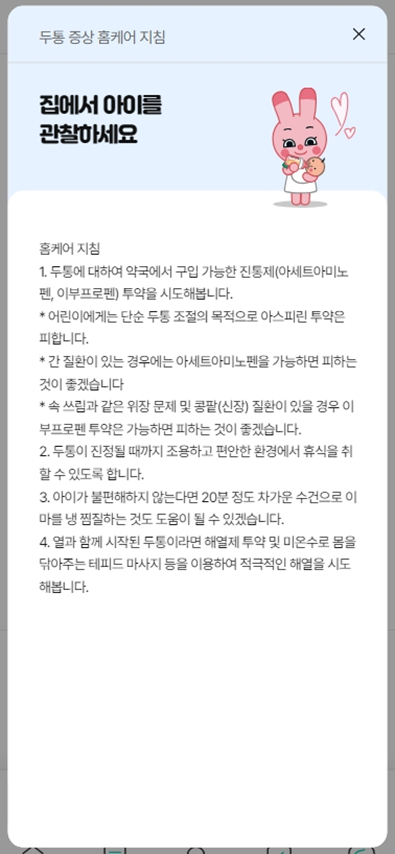Seoul National University Hospital Operates Pediatric Emergency Triage System ‘I-Apa’... Provides Quick Emergency Response Guide
Pediatric emergency platform with customized emergency treatment and home care guidelines for 34 symptoms, and even a hospital/pharmacy search function
- I-Apa Surpasses 13,730 Monthly Users... User Satisfaction Rating of 4.3 Points Proves High Reliability

[Figure 1] I-Apa Website Overview: Platform that provides step-by-step emergency response guidance, such as observation, outpatient treatment, emergency room treatment, and 119 call, according to various symptoms
On November 26th, Seoul National University Hospital (SNUH, President Kim Young Tae) announced that it will operate the pediatric emergency screening system ‘I-Apa’ in a more advanced and user-centered manner to strengthen this essential medical delivery system. I-Apa is a customized online platform that helps guardians effectively deal with their children’s emergencies at home. With 13,730 monthly users, it is providing practical help to many guardians.
The reason SNUH set out to build I-Apa is to improve the reality where it is difficult for guardians to easily obtain reliable medical information and appropriate response guides in pediatric emergency situations. The medical staff of the Department of Pediatric Emergency Medicine at SNUH directly participated in the development so that guardians could decide whether to visit the emergency room and take accurate measures appropriate to the situation. Through this advanced work, various functions such as ▲34 symptom-specific emergency treatment guides ▲hospital/clinic/pharmacy search ▲emergency room comprehensive situation board ▲emergency treatment video data were strengthened to increase user convenience.

[Figure 2] How to use I-Apa : When the guardian selects the child's symptoms and enters detailed symptoms, the system evaluates the severity and provides appropriate response methods.
The process of ‘I-Apa’’ is simple yet systematic. When a guardian selects the child’s condition from a total of 34 symptoms, including fever, vomiting, diarrhea, and convulsions, and enters the age, gender, and severity of the symptoms, the system analyzes the results and suggests a response method that matches the severity. In the case of mild symptoms, it provides home care guidelines that can be applied at home, and in the case of severe symptoms, it provides a customized guide that recommends visiting the emergency room or calling 119, thereby reducing the anxiety of the guardian and helping them take appropriate measures. Thanks to this systematic support, the user satisfaction rating reached 4.3 points (out of 5), and 93% of guardians responded that I-Apa would be of great help when their child is sick. In addition, 96% of users responded that they would recommend I-Apa to people around them, proving the reliability and usefulness of the service.
I-Apa provides useful information not only to guardians at home but also to those who care for children, such as health and childcare teachers, contributing to improving the quality of child health care.
Professor Kim Do-Gyun of the Department of Pediatric Emergency Medicine said, “I-Apa is expected to be of great help in responding quickly to pediatric emergencies at home,” and added, “We will work to expand the service to areas outside of Seoul in the future so that more guardians can easily access medical information.”
Lim Jae Jun, the head of the public welfare department, said, “I hope that the medical information held by SNUH, an emergency medical institution in the Seoul area, will be widely distributed to the public through I-Apa, and that it will become a service that can be used with confidence in emergencies,” and added, “We will pursue continuous development to solve essential medical problems.”
Meanwhile, ‘I-Apa’ can be accessed on both PC and mobile, and the homepage address is i-apa.net (i-apa.net).

[Figure 3] First Aid for Fever Symptoms

[Figure 4] Home Care Guidelines for Headache Symptom